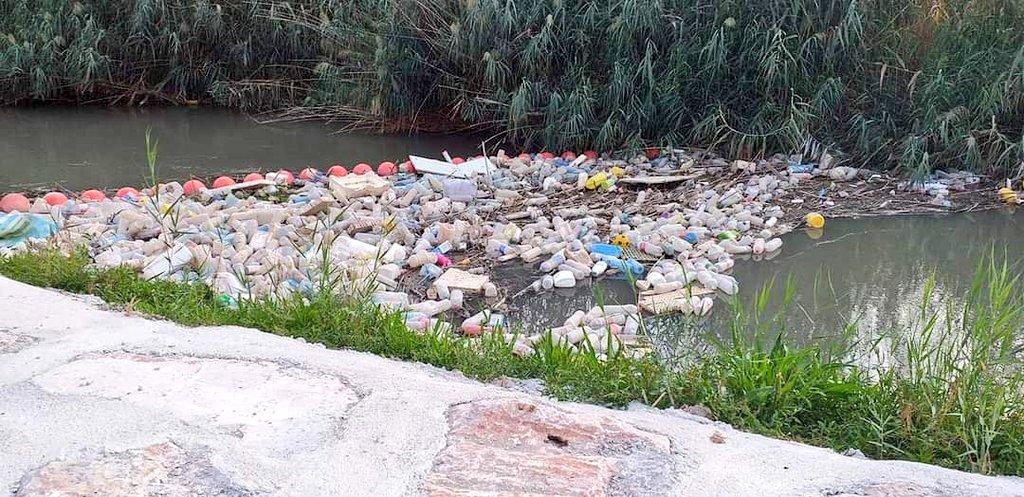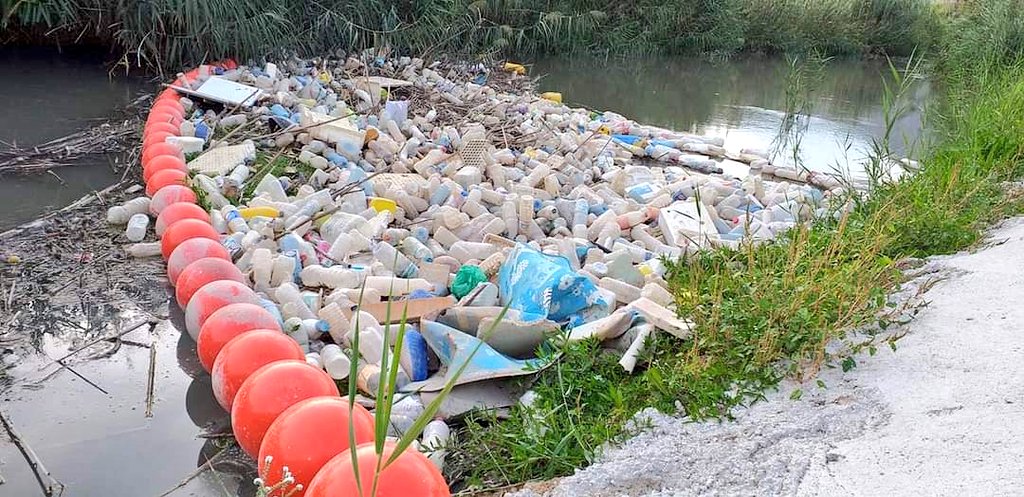On Monday there was a flock of geese paddling down the Segura River toward the Orihuela city approaches. At the entrance to the urban area, however, they came across a mountain of bottles, containers and other plastics which, unfortunately, put paid to their tour of the historic city.
These geese had no choice but to take flight in order to avoid the accumulated stockpile that had gathered by the floating barrier, installed just over a month ago, by the Segura Hydrographic Confederation (CHS) at the entrance to the urban riverbed.
Thousands of plastic items have now been there for a number of days, as a result of the recent implementation of the system that aims to prevent the waste from accumulating in the river weir, in the middle of the urban area, something that has been happening for years.
The CHS has installed several floating barriers along the channel and whilst they would seem to be serving their purpose, if left for a period without being cleaned, the image that they portray is one of decay and deterioration.
The responsibility for cleaning the barriers in Orihuela falls to the municipality. Unfortunately it is not a task that many people cherish, as can be seen from the image.
However the councillor for the Environment, Dámaso Aparicio, on being told of the accumulation, said that “we are going to clean it up immediately.”

The councillor said he was “very satisfied” with the installation of the barrier as it prevents most of the waste from travelling into the urban area. “Not only does it improve the quality and the vision of a cleaner riverbed in the urban section, but it also ensures that the waste that arrives from upstream does not travel further down the river into Callosa and Almorad.”
Unfortunately the accumulation of such waste shows that plastics still continue to arrive almost nonstop, a problem that seems to have no solution. 3,000 kilos of waste were removed the last time this section of riverbed was cleaned in the Vega Baja, where 150 tons of waste is accumulated every year.
According to a study carried out by the Miguel Hernández University (UMH), 90% of the plastics that accumulate in the river are from urban use, while the rest are agricultural.
The CHS has offered the farmers to pay for the installation of barriers across the Vega Baja but as most of the ditches and channels re privately owned they need to obtain permission for their installation.
Any agreement must also be signed with the Sustainable Vega Baja Consortium, made up of the 27 municipalities across the region, for the removal of accumulated waste. However, for the time being, these negotiations have not be carried out.





